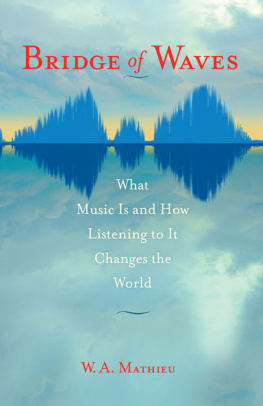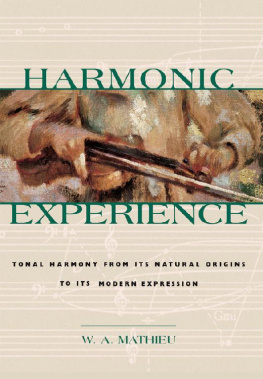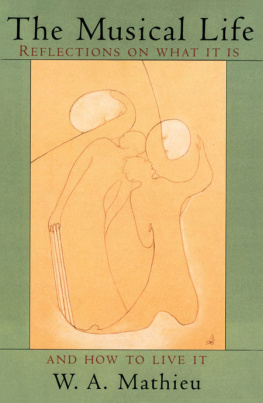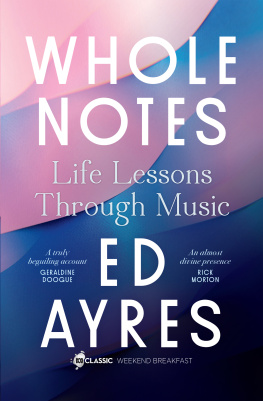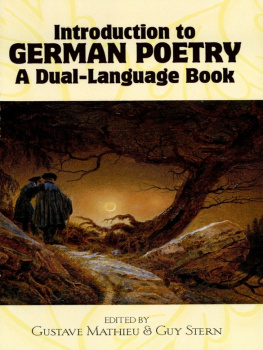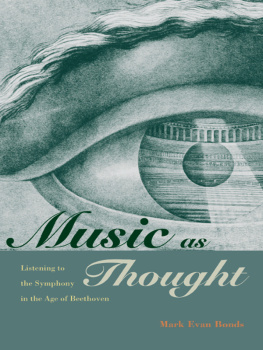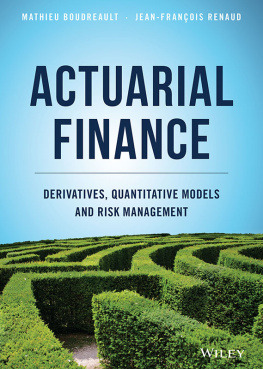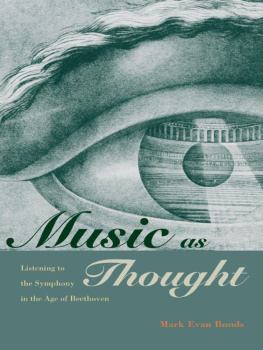W. A. Mathieu - Bridge of Waves: What Music Is and How Listening to It Changes the World
Here you can read online W. A. Mathieu - Bridge of Waves: What Music Is and How Listening to It Changes the World full text of the book (entire story) in english for free. Download pdf and epub, get meaning, cover and reviews about this ebook. year: 2010, publisher: Shambhala, genre: Romance novel. Description of the work, (preface) as well as reviews are available. Best literature library LitArk.com created for fans of good reading and offers a wide selection of genres:
Romance novel
Science fiction
Adventure
Detective
Science
History
Home and family
Prose
Art
Politics
Computer
Non-fiction
Religion
Business
Children
Humor
Choose a favorite category and find really read worthwhile books. Enjoy immersion in the world of imagination, feel the emotions of the characters or learn something new for yourself, make an fascinating discovery.
- Book:Bridge of Waves: What Music Is and How Listening to It Changes the World
- Author:
- Publisher:Shambhala
- Genre:
- Year:2010
- Rating:4 / 5
- Favourites:Add to favourites
- Your mark:
- 80
- 1
- 2
- 3
- 4
- 5
Bridge of Waves: What Music Is and How Listening to It Changes the World: summary, description and annotation
We offer to read an annotation, description, summary or preface (depends on what the author of the book "Bridge of Waves: What Music Is and How Listening to It Changes the World" wrote himself). If you haven't found the necessary information about the book — write in the comments, we will try to find it.
Bridge of Waves: What Music Is and How Listening to It Changes the World — read online for free the complete book (whole text) full work
Below is the text of the book, divided by pages. System saving the place of the last page read, allows you to conveniently read the book "Bridge of Waves: What Music Is and How Listening to It Changes the World" online for free, without having to search again every time where you left off. Put a bookmark, and you can go to the page where you finished reading at any time.
Font size:
Interval:
Bookmark:
[An] erudite and thought-provoking collection of essays. Mathieu more than accomplishes his goal of showing us many different ways of appreciating and listening to music.
Spirituality & Practice
Like his previous two books, Bridge of Waves is written in an informal, chatty style that makes clear the dynamics of music and the transformative power it has on the individual as listener or as performer.
New Age Retailer
Mathieus lively and delightful essays lead you to question what music is, how it works, and what its for.
Branches of Light
ABOUT THE BOOK
Music is, in one sense, merely a series of fleeting vibrations that arise and subside. How could it be that something so insubstantial fills us, and calms us, and makes us weep? Because, says W. A. Mathieu, music bridges mind and heart, self and other, and affirms our place in the world. Everyone uses the bridge of music, from casual listeners to devoted professionals. Mathieus delightful and trenchant prose asks you to question what music is, how it works, and how to understand its value in your life, in the life of your community, and in the evolution of the cosmos.
WILLIAM ALLAUDIN MATHIEU is a composer pianist whose long and varied career ranges from his early work with the Stan Kenton band and The Second City Theater, to his extensive catalogue of song cycles, works for choir, and instrumental concert music. He has recorded extensively, and is the author of The Listening Book, The Musical Life, and Harmonic Experience: Tonal Harmony from Its Natural Origin to Its Modern Expression.
Sign up to learn more about our books and receive special offers from Shambhala Publications.

Or visit us online to sign up at shambhala.com/eshambhala.
BRIDGE of WAVES

What Music Is
and
How Listening to It
Changes the World
W. A. MATHIEU

SHAMBHALA
Boston & London
2010
Shambhala Publications, Inc.
Horticultural Hall
300 Massachusetts Avenue
Boston, Massachusetts 02115
www.shambhala.com
2010 by W. A. Mathieu
All rights reserved. No part of this book may be reproduced in any form or by any means, electronic or mechanical, including photocopying, recording, or by any information storage and retrieval system, without permission in writing from the publisher.
Library of Congress Cataloging-in-Publication Data
Mathieu, W. A.
Bridge of waves: what music is and how listening to it
changes the world / W. A. Mathieu.1st ed.
p. cm.
Includes bibliographical references.
eISBN 978-0-8348-2180-4
ISBN 978-1-59030-732-8
1. MusicPhilosophy and aesthetics. 2. Listening. I. Title.
ML3800.M2473 2010
781.1dc22
2010022473
Where there is listening there is love.
Contents
A single tone played at the beginning of a concert opens a cosmic inquiry.
The metabolism of music embodies every biocurve from brain waves to breath to sex, to the life cycle itself.
The minds raison dtre is to extract meaningit seeks patterns in phenomena. Music is a micro-universe of patterns the mind learns to decode.
Music moves us from sense to sensibility, from mode to mood, and from metaphor to pure feeling.
There is a musical dynamic between the cognitive and intuitive in music, intellect and intuition. The wordless language of music integrates the territories of the mind and the heart.
There are parallels between the rules of music and the codes of daily life. The give-and-take of music is a model of harmonious living.
Music can be heard as representing a story outside of the music, or as a listeners personal narrative, as a biography of the composer, or as ritual, as cultural history, as the story of humankind, of all life, or purely as the story of itself.
In revealing ways, music and life reflect one another in our minds, our behaviors, our evolution, and our cosmologies.
On the path toward wholeness, music transcends the paradoxes of the cognitive mind, facilitates the co-arising of the relative and absolute, and guides us toward our ideal.
As proactive listeners we can become more aware of the consumers role, and reclaim music as personal core experience. Learning to practice and compose is a way of learning ones own self.
The vibrational states of music connect a universe of waves and are ultimately a guide to being-in-itself. Some of the metaphors we have used for the connective and expansive powers of music are reexamined.
Some of the practices and ideas discussed throughout the book are summarized and embellished.
A Report from the Piano Bench
Mid-concert. Small town, small hall, wood walls, two hundred listeners. The Steinway is old, trustworthy, very black. Im about to improvise a pieceeight, maybe ten minutes long. I have to start someplace right now. In my head a note arrives and simultaneously I see it on the keyboard in front of me. Its the black one in the middle of a group of three black ones just even with my extended right arm. I reach out and press that one down. Instantly I feel the percussion of the hammer against the string. Then, as a familiar sky lights up in my skull, the tone extends into a gold ribbon leading to an inner horizon where an ocean of the waves called music begins to surge in all directions.
Where has that first note come from?
From childhood Ive had a stubborn fascination with the ground of being, the perception of being-as-itself, the pure sensibility given to us prior to reason. I have memories of mere standing in a field or in a garden, silent in nameless being. From the height of a four-year-old eye I see patterns of dew on new grass, fluorescing moss spores, exotic-colored boots lined up in the nursery school cloakroom, a red-coated woman just beyond the window, sun through windless maple leaves. Various as these memories are, there is a constant sense of no beginning, no ending, only completion.
I grew to my majority learning to name everything in sight, like Adam at the Lords bidding: ox, field, thigh. The mind does love to name, but as a boy I was never told, and I did not come to realize until much later, how names occlude direct experience in the act of describing it. I never knew Id left the garden.
As a six-year-old musician, I learned middle C, major triad, and eventually oblique motion, legato touch. As I grew, I did fortunately begin to recognize that naming something is different from hearing it, just as surely as reading the menu is not eating the dinner. Though I wish Id had more guidance, I did gradually learn that there is a time for the name and a time for the nameless. In my twenties I began to realize how deeply musicians train to keep nameless knowing paramount, while maintaining fidelity to the mind-play implicit in music making. Since Im a teacher and a writer as well as a composer of written music, I have learned to name just about anything nameable in music; at the same time Ive had to develop strategies for dwelling long and clear in the nameless intuitive.
Back to the concert. It turns out that first note I play (which is about to let loose thousands more) is named G-sharp, although I know this only later, in hindsight. At the moment I play the G-sharp, I know its name only in the way we know the spelling of words as we speak them.
Ultimately the named and the nameless co-arise; they are inseparably braided, not unlike speaking and writing. One learns devotion to a life of braiding the named and the nameless. The lessons Ive learned in this braiding work hold true for music, and Ive learned them first and foremost as a musician. And, as has become evident to me only over many decades, they hold true for daily life as well. The way musics lessons and lifes lessons modulate one another have become the substance of my life, and the focus of this book.
Next pageFont size:
Interval:
Bookmark:
Similar books «Bridge of Waves: What Music Is and How Listening to It Changes the World»
Look at similar books to Bridge of Waves: What Music Is and How Listening to It Changes the World. We have selected literature similar in name and meaning in the hope of providing readers with more options to find new, interesting, not yet read works.
Discussion, reviews of the book Bridge of Waves: What Music Is and How Listening to It Changes the World and just readers' own opinions. Leave your comments, write what you think about the work, its meaning or the main characters. Specify what exactly you liked and what you didn't like, and why you think so.

